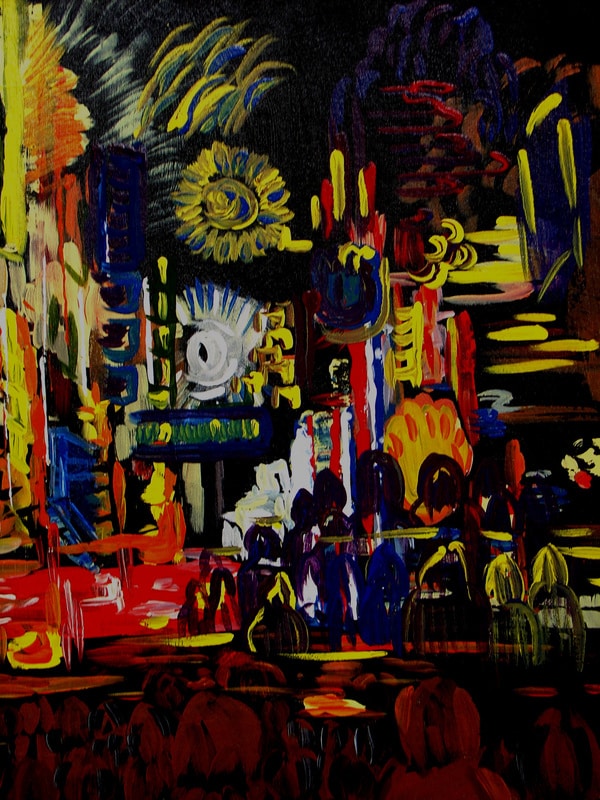
Bathe in New Light | The City in Art
By Dr. Mark David Major, AICP, CNU-A
Neon, noun, ne·on, ˈnē-ˌän – a colorless odorless mostly inert gaseous element that is found in minute amounts in air and used in electric lamps. From the Greek, neuter of neos new, first Known Use: 1898.
Art is rarely or merely about the physical representation of the thing but instead about light, shadow and reflection as represented in counter pose to the physical reality of the thing itself.
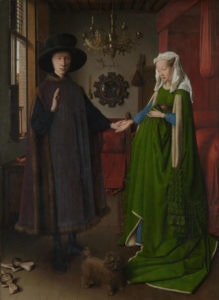
This is a widespread tradition that can be traced back to long before Modernism with artists such as Leonardo da Vinci, Caravaggio, and Jan van Eyck. For example, Jan van Eyck’s The Arnolfini Portrait (1434, National Gallery, London) where the artist paints his own reflection in the mirror located on the back wall behind his subjects (see below).
In Under Neons, Harbert paints the city as bathed in neon light, as if physicality of the thing itself did not have an objective existence until awash in shadows and reflections birthed by the light itself. In the same tradition as Georgia O’Keefe’s Radiator Building-Night, New York (1927) and Harbert’s The Blue City (2012), the artist encourages us to see the city in a new and different way; not merely as a physical entity but also as an abstract reality bathed in its all-consuming light. This is given urgent power by the artist through the use of primary colors (reds, yellows, and blues) and blacks/whites, which hint at Piet Mondrian’s famous abstract paintings of New York. However, the control and preciseness found Mondrian’s abstract formalism is sacrificed in favor of a kinetic energy – of vibrant motion – painted in the light and dark of the city. Of course, Under Neons immediately suggests the city we most associate with neon spectacle: Las Vegas. However, this could be any city. This could be our city, given life anew in the light.
 About Rejcel Harbert
About Rejcel Harbert
Rejcel Harbert has over ten years of experience as the owner of Art by Rejcel, where she sells photographic services, paintings, and abstract and expressionistic acrylic arts. She received her bachelor of arts in business, economics, and Spanish from Jacksonville University in 2001. She is a member of the Business Fraternity Alpha Kappa Psi, the Honor Society Phi Kappa Phi, and received an award from the Women’s Business Organization for Achievement. Ms. Harbert does religious volunteer work including construction and repair work for community members in need. For more information on Art by Rejcel, visit www.rejcel.com.
The City in Art is a series by The Outlaw Urbanist. The purpose is to present and discuss artistic depictions of the city that can help us, as professionals, learn to better see the city in ways that are invisible to others. Before the 20th century, most artistic representations of the city broadly fell into, more or less, three categories: literalism, pastoral romanticism, and impressionism, or some variation thereof. Generally, these artistic representations of the city lack a certain amount of substantive interest for the modern world. The City in Art series places particular emphasis on art and photography from the dawn of the 20th century to the present day.

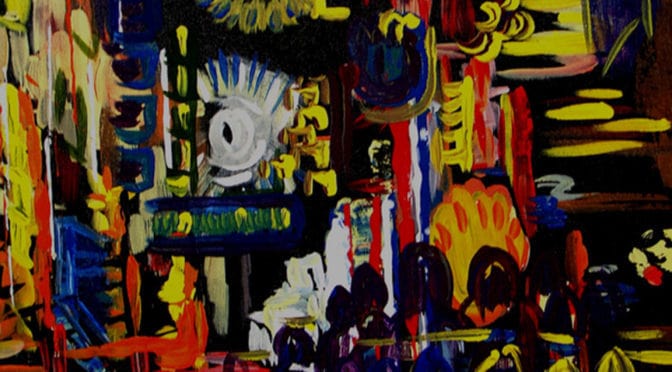
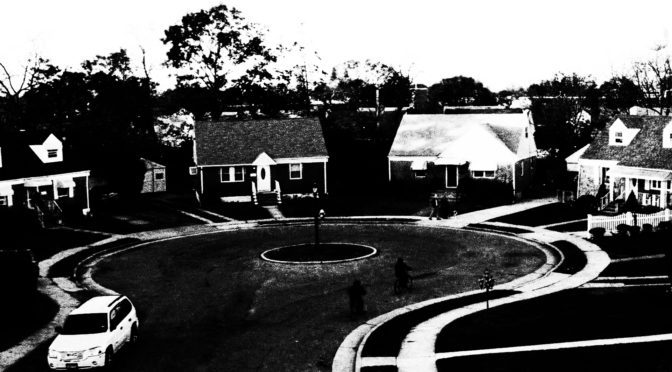
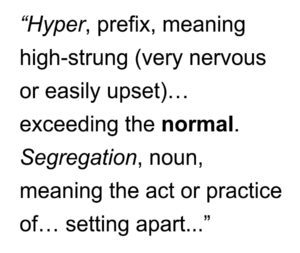 observation of individuals or items from another group: the institutional separation of an ethnic, racial, religious, or other minority group from the dominant majority; the state or condition of being segregated, set apart, separated, or restricted to one group. Origin of hyper is short for hyperactive (First Known Use: circa 1942) from Greek huper ‘over, beyond.’ Origin of segregation is 1545-55 from the Late Latin sēgregātiōn– (stem of sēgregātiō), equivalent to sēgregāt (us) (see segregate) + –iōn– –ion. Synonyms include extreme loneliness and excessive isolation to the point of being unhealthy for individuals or society.
observation of individuals or items from another group: the institutional separation of an ethnic, racial, religious, or other minority group from the dominant majority; the state or condition of being segregated, set apart, separated, or restricted to one group. Origin of hyper is short for hyperactive (First Known Use: circa 1942) from Greek huper ‘over, beyond.’ Origin of segregation is 1545-55 from the Late Latin sēgregātiōn– (stem of sēgregātiō), equivalent to sēgregāt (us) (see segregate) + –iōn– –ion. Synonyms include extreme loneliness and excessive isolation to the point of being unhealthy for individuals or society.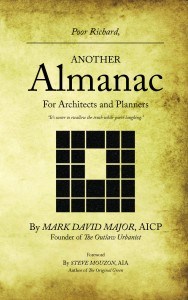
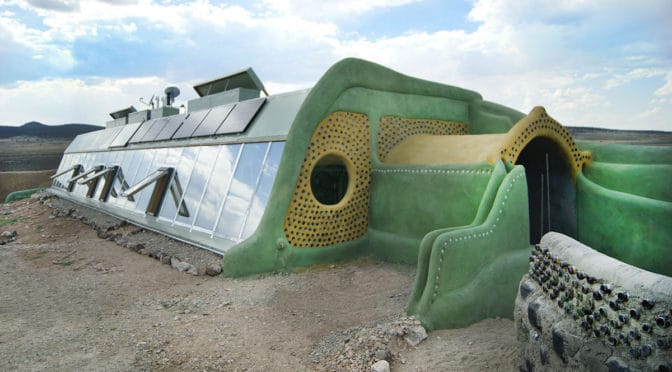
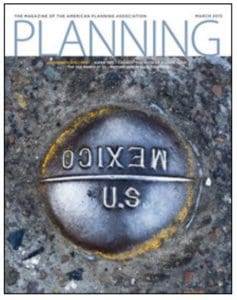 Planning Naked | March 2015
Planning Naked | March 2015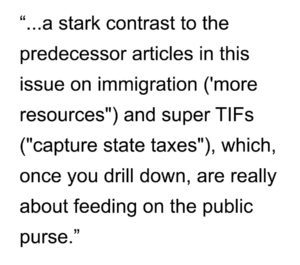
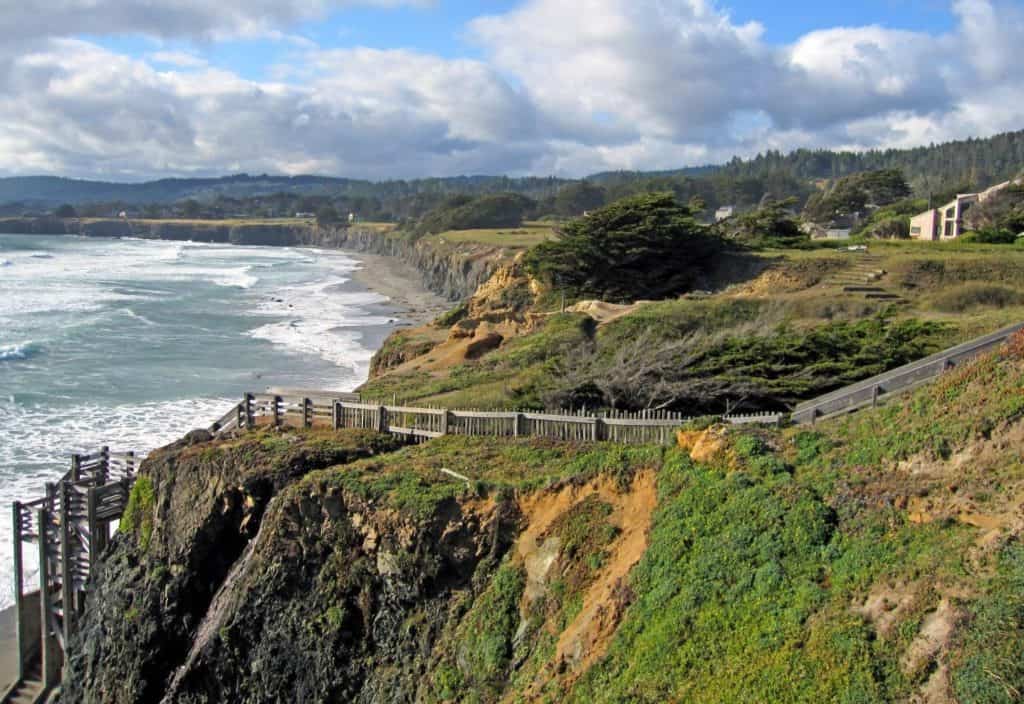
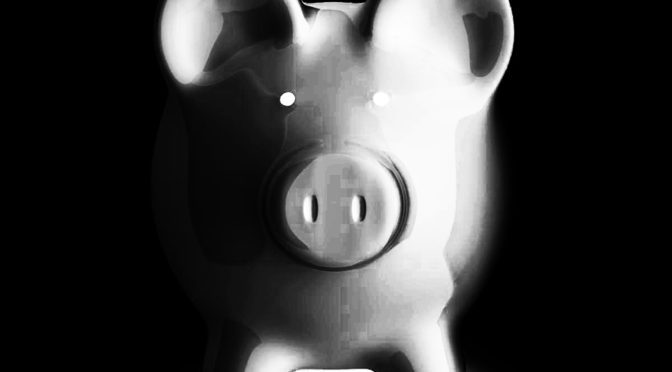
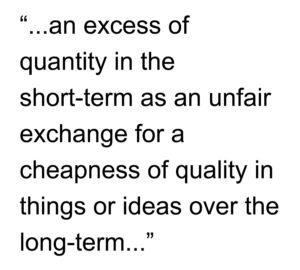 In cities, this most often refers to an excess of quantity in the short-term as an unfair exchange for a cheapness of quality in things or ideas over the long-term. For example, a cheap idea efficiently implemented in the short term is often inevitably more expensive than a good idea carefully crafted and implemented over the long term. Synonyms include: miserliness, niggardliness, penny-pinching, or tightfistedness; see also FUBAR (Fucked Up Beyond All Recognition) or clusterfuck. (1400-50; late Middle English parcimony < Latin parsimōnia, parcimōnia frugality, thrift, equivalent to parsi– combining form of parsus, past participle of parcere to economize or parci– combining form of parcus sparing + –mōnia –mony suffix signifying action, state, or condition).
In cities, this most often refers to an excess of quantity in the short-term as an unfair exchange for a cheapness of quality in things or ideas over the long-term. For example, a cheap idea efficiently implemented in the short term is often inevitably more expensive than a good idea carefully crafted and implemented over the long term. Synonyms include: miserliness, niggardliness, penny-pinching, or tightfistedness; see also FUBAR (Fucked Up Beyond All Recognition) or clusterfuck. (1400-50; late Middle English parcimony < Latin parsimōnia, parcimōnia frugality, thrift, equivalent to parsi– combining form of parsus, past participle of parcere to economize or parci– combining form of parcus sparing + –mōnia –mony suffix signifying action, state, or condition).
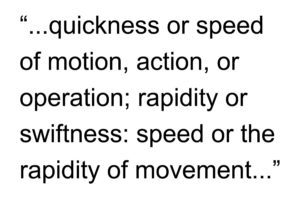 It is measured in metres per second, miles per hour, etc: the derivative of position with respect to time; a rate of occurrence or action, the rate of speed with which something happens; rapidity of action or reaction; the rate of turnover (Middle French velocité, from Latin velocitat-, velocitas, from veloc-, velox quick or swift; probably akin to Latin vegēre to enliven – more at wake; related to volāre to fly. See velocipede, -ty: First Known Use: 15th century).
It is measured in metres per second, miles per hour, etc: the derivative of position with respect to time; a rate of occurrence or action, the rate of speed with which something happens; rapidity of action or reaction; the rate of turnover (Middle French velocité, from Latin velocitat-, velocitas, from veloc-, velox quick or swift; probably akin to Latin vegēre to enliven – more at wake; related to volāre to fly. See velocipede, -ty: First Known Use: 15th century).